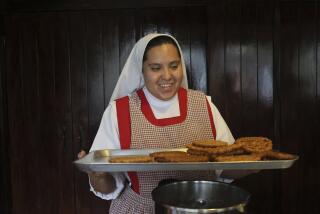NONFICTION - Aug. 14, 1994
- Share via
THE BURDENS OF SISTER MARGARET by Craig Harline. (Doubleday: $24; 359 pp.) God is just an extra in this running gossip column on life in a 17th-Century convent of third-order Franciscans in Leuven in the Netherlands. (Now I know what they mean by petty burgher.) Sister Margaret Smulders entered the convent of Bethlehem in 1606 at age 21. Almost immediately, the new postulant began to record the transgressions, slights and sins of the other sisters, often in preparation for a “visitation” from a bishop, archbishop or dean. Not surprisingly, this did not endear her to the other veiled sisters, and she was expelled from the community twice, from 1616 to 1618 and from 1624 to 1635. Various signs, including a dog with its head in the ground, apparitions and “shining rays of the moon” exposed the only possible explanation for Margaret’s agitating, rabble-rousing behavior: Margaret was a witch. Either that or she was possessed. Politely, and against almost everyone’s wishes, she was given a guest room, from which, until her death in 1648, she wrote her revenge. As it turns out, Margaret was also pretty, and one of the demons possessing her took the form of the house confessor Henri Joos, whose routine sexual advances were not confined to Sister Margaret. Being “importuned by carnal affections” made Margaret melancholy and suicidal. Melancholy, in the physic of the day, lead to possession. Not at all surprisingly, victims were often young women. Many of Margaret’s complaints involve the Mater, Anna Vignarola (later Adriana Truis), her favoritism, her unseemly generosity, her love of holidays. Like all pettiness, Margaret’s backfires, and the Mater comes out looking like a pretty nice nun. Margaret dies “with optimum disposition of spirit,” within the “bosom of the church” to the strains of the Pater Noster.
More to Read
Sign up for our Book Club newsletter
Get the latest news, events and more from the Los Angeles Times Book Club, and help us get L.A. reading and talking.
You may occasionally receive promotional content from the Los Angeles Times.










